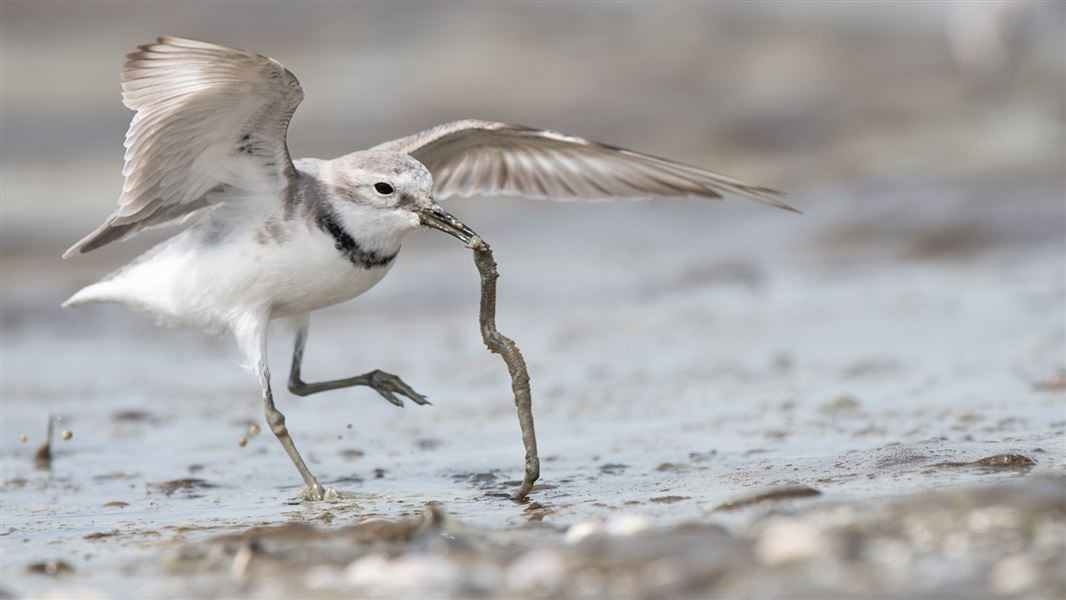
Introduction
The known effects of marine sediment on New Zealand’s 87 seabird species and 47 shorebird species were discussed in this report. Knowledge gaps were also highlighted.Download the report
The effects of sediment on birds foraging in intertidal and nearshore habitats in Aotearoa New Zealand: A literature review and recommendations for future work. (PDF, 7,901K)
Lukies, K. A., Gaskin, C. P. and Whitehead, E. A., 2021.
Known effects of sediment
Sedimentation events are both cumulative, where sediment accumulates slowly over time, or catastrophic, where sediment is rapidly deposited, often following severe rainfall. Both types affect seabirds and shorebirds.
The report notes that there is relatively little published literature about the effects of sediment on birds. Some information is available about how:
- turbidity caused by sedimentation can affect seabirds that hunt visually, including terns, shags and penguins
- sedimentation can indirectly affect seabirds and shorebirds by affecting the marine food web (especially macroinvertebrates)
- sedimentation reduces light penetration, smothers the seafloor and changes the composition of marine ecosystems.
Use of the Resource Management Act to address sedimentation
The effects of sediment have been addressed with the Resource Management Act in several different situations. Examples included in the report are:
- Okura Estuary urban development
- forestry in the Marlborough Sounds and its impact on king shags/kawau
- sedimentation in the southern Firth of Thames and its impact on shorebirds
- regional and district plans in Otago and yellow-eyed penguin/hoiho foraging
- New Zealand fairy terns/tara iti and mangrove removal
- coastal birds in the Motiti Natural Environment Management Area
- sand mining at the South Taranaki Bight
- dredging of Port Otago and its impact on coastal birds.
Recommendations for future research
Specific research priorities were highlighted in the report. These were suggested to inform future policy decisions.
Sediment sources and movement
Investigate how sediment from storms, sand mining, forestry, agriculture and urban development alters seabird and shorebird diets.
Develop a model to study how cumulative and catastrophic sedimentation events affect seabird and shorebird species. Climate change projections should be included.
Research how dredge dumping affects the diet, productivity and survival of seabirds.
Effects on ecosystems and bird prey
Review the effects of sediment on fish and birds in our largest estuaries.
Create a sediment impact monitoring tool based on the most important shorebird feeding areas in New Zealand.
Investigate the effects of mangroves on the availability of feeding habitat for coastal birds including areas where mangroves have been removed.
Effects on foraging
Investigate the effects of sediment on seabird foraging, especially threatened species like yellow-eyed penguin/hoiho and king shags/kawau and other visual feeders. The cumulative effects of sedimentation and other stressors, like warmer seas and fishing, could also be studied.
Common and easily observed species like white-fronted tern/tara, Australasian gannet/tākapu, pied shag/kāruhiruhi and little penguin/kororā could be monitored during and outside events that cause sediment plumes in harbours, estuaries and coastal waters.
Model the survival and productivity of seabirds after previous catastrophic sedimentation events and track birds in areas where the effects of sedimentation are known.